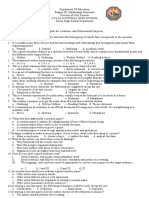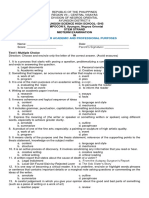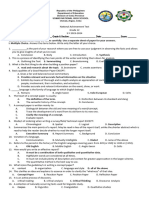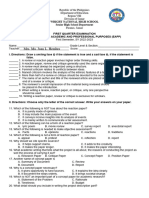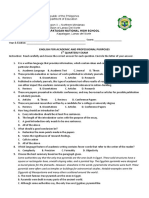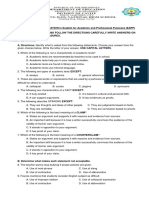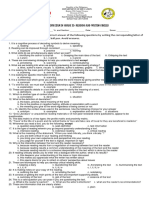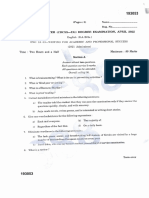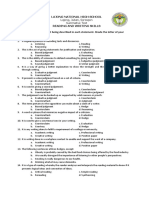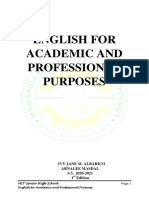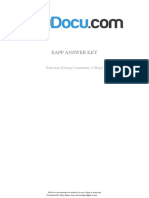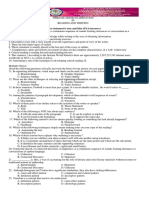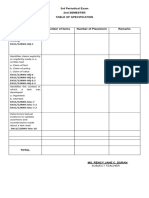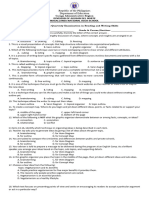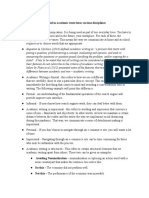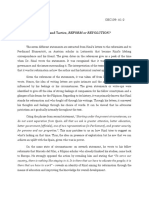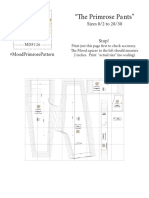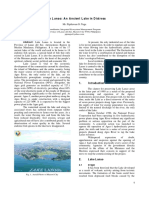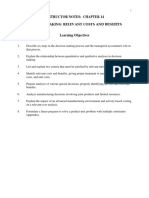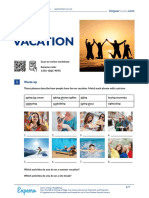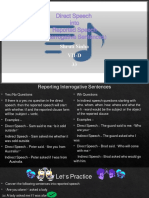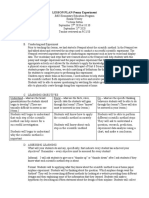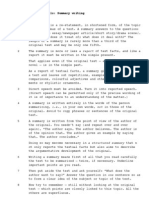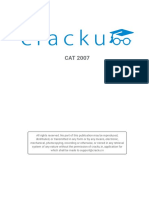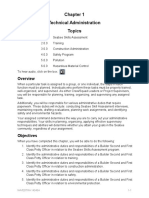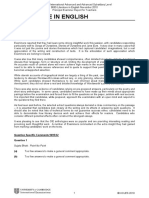0% found this document useful (0 votes)
123 views2 pagesAnswer Choice and Which Correctly Completes The Statement. There Are Four (4) Answer Choices Represented by The Letters A, B, C, and D
This document contains a 25-question pre-test on English for Academic and Professional Purposes. The questions cover topics such as the definition of academic writing, key elements of evaluating content, mechanics in writing, reading techniques, summarizing vs paraphrasing, rhetorical devices, and types of academic papers. The pre-test aims to assess understanding of foundational concepts for academic and professional communication.
Uploaded by
Jewel CabigonCopyright
© © All Rights Reserved
We take content rights seriously. If you suspect this is your content, claim it here.
Available Formats
Download as DOCX, PDF, TXT or read online on Scribd
0% found this document useful (0 votes)
123 views2 pagesAnswer Choice and Which Correctly Completes The Statement. There Are Four (4) Answer Choices Represented by The Letters A, B, C, and D
This document contains a 25-question pre-test on English for Academic and Professional Purposes. The questions cover topics such as the definition of academic writing, key elements of evaluating content, mechanics in writing, reading techniques, summarizing vs paraphrasing, rhetorical devices, and types of academic papers. The pre-test aims to assess understanding of foundational concepts for academic and professional communication.
Uploaded by
Jewel CabigonCopyright
© © All Rights Reserved
We take content rights seriously. If you suspect this is your content, claim it here.
Available Formats
Download as DOCX, PDF, TXT or read online on Scribd
/ 2
